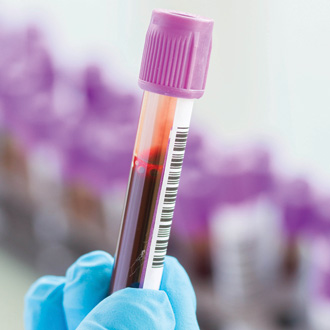GPs ‘should consider cancer’ in patients with upper-normal platelet counts

GPs should consider cancer in patients with an upper-normal platelet count, a new study has suggested.
Researchers linked primary care patient records with national cancer data and found that the incidence of cancer rose in line with the increasing platelet count, with a consistently higher prevalence in males.
While it was previously thought that a platelet count above 400 x 109/l was an indicator for cancer, this new research has suggested that GPs should now consider cancer diagnosis in patients with a platelet count above 325 × 109/l for men and 375 × 109/l for women.
However the paper has called for the findings to be replicated in a much larger sample before a ‘blanket recommendation’ is issued.
The cohort study, published in Oxford Family Practice, linked medical records from the Clinical Practice Research Datalink with English National Cancer Registration Service data, from 2000 to 2013.
A sample of 2,700 patients was split into three groups depending on platelet count: 325–349 × 109/l; 350–374 × 109/l; 375–399 × 109/l.
The research team then obtained the incidence of cancer diagnosis in the year following that platelet count, and saw that it rose with the increasing platelet count from 2.6% in the 325–349 × 109/l group to 5.1% in 375–399 × 109/l band.
Colorectal cancer was most commonly diagnosed across all three groups, and incidence was consistently higher in males than in females.
Men in the lowest group – with platelet counts >325 × 109/l – exceeded NICE’s 3% risk threshold for cancer investigation.
Women surpassed the threshold at a platelet count of 375 × 109/l, although the risk for the 350–374 × 109/l group was just under at 2.8%.
The paper stated that: ‘This suggests that clinicians should consider a cancer diagnosis in patients with a platelet count above these values’.
However it added that until the results are replicated on a larger scale, ‘a blanket recommendation for investigation would be premature’.
NICE’s suspected cancer guidance, updated last year, highlighted a ‘raised platelet count’ as a cancer indicator however did not specify what is classified as ‘raised’.
Imperial College London professor of oncology Iain McNeish said: ‘There appears to be a linear gradient of increasing cancer risk with increasing platelet count, so it’s important to define where the cut-off should be to define ‘high’, and also the age at which you would start investigating patients for cancer’.
Research from last year found that a platelet count above 400 x 109/l, known as thrombocytosis, is a significant marker of cancer risk.
It said that over 11% of men and 6% of women diagnosed with thrombocytosis were then diagnosed with cancer in the following year.
The risk increased further when an additional high platelet count was measured within six months of the first finding.
Pulse July survey
Take our July 2025 survey to potentially win £1.000 worth of tokens

Visit Pulse Reference for details on 140 symptoms, including easily searchable symptoms and categories, offering you a free platform to check symptoms and receive potential diagnoses during consultations.











